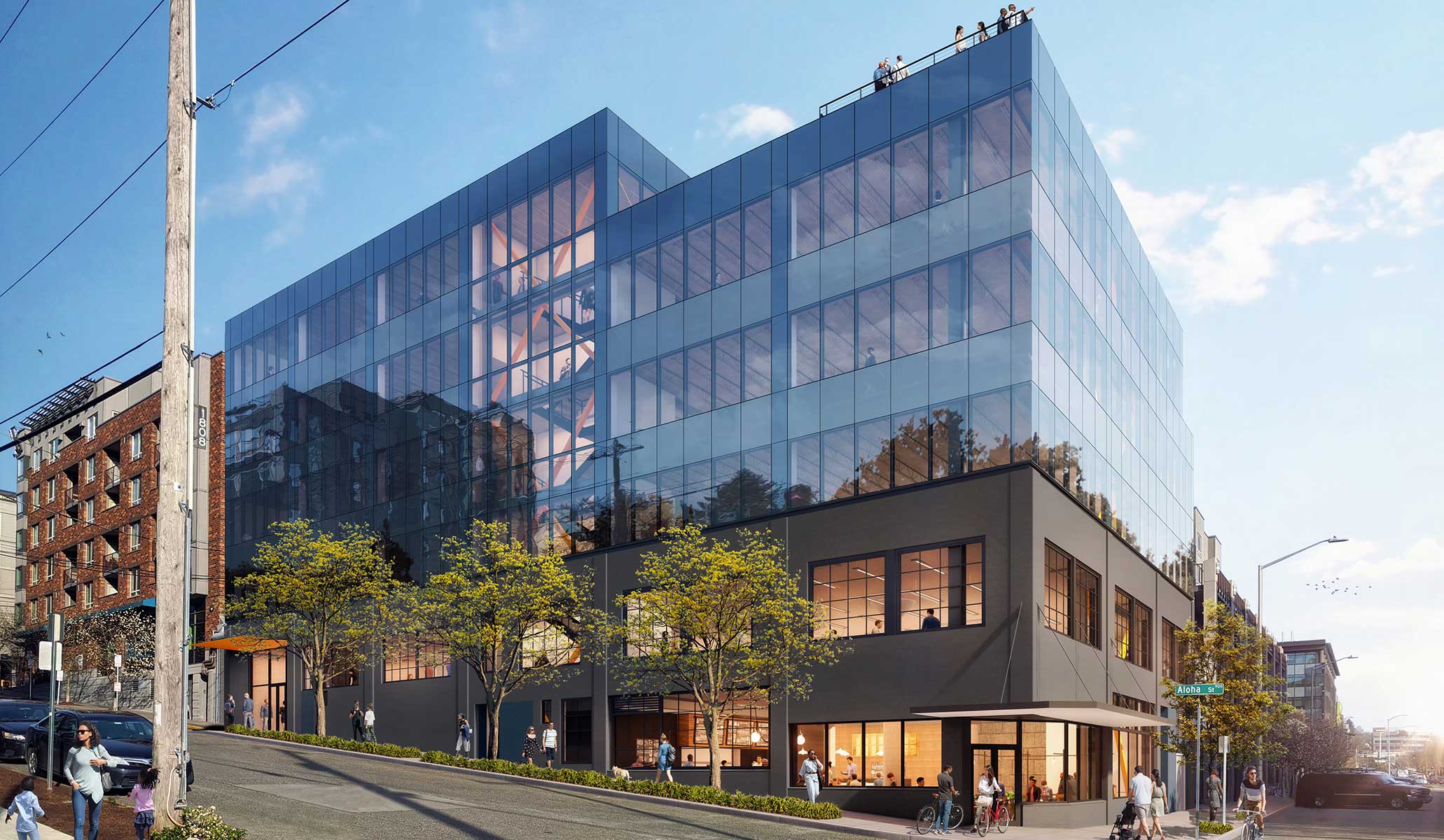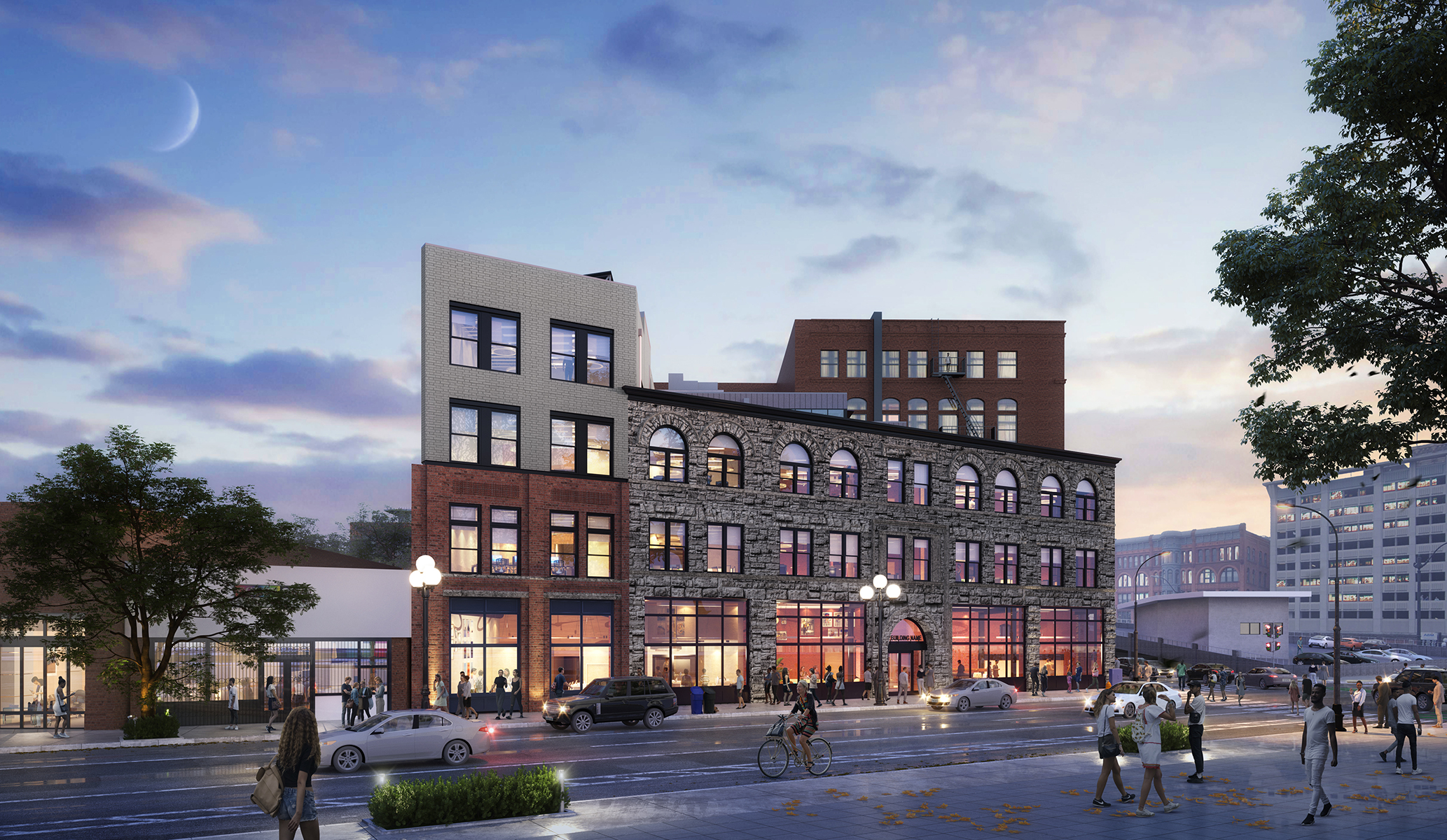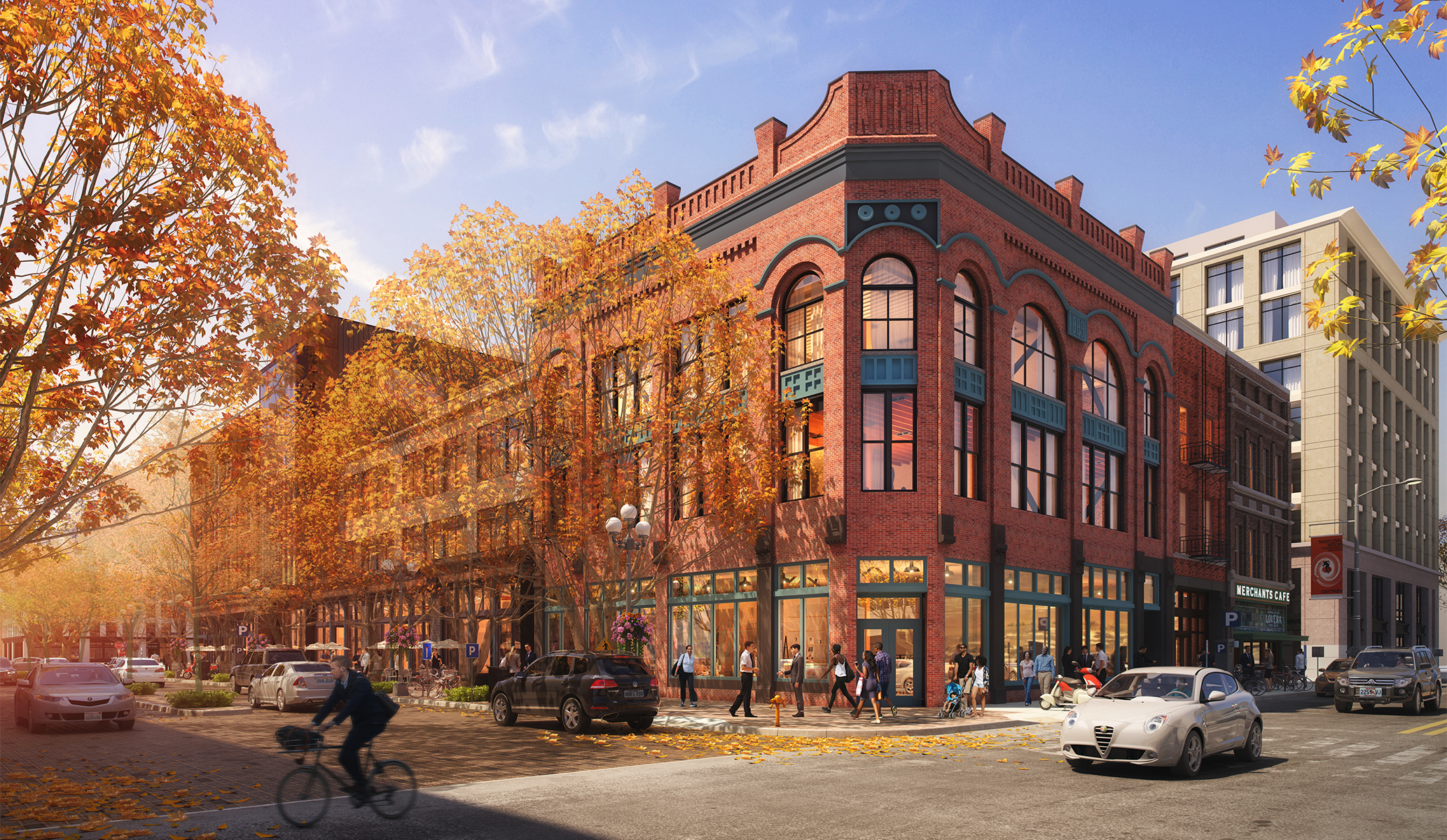Date July 16, 2021
What Does It Mean To Build Sustainably In Seattle?

The 760 Aloha in South Lake Union will add four stories to a 1940’s concrete warehouse. Rendering: Feature Graphics.
Rising concerns about the climate crisis and general interest in reducing our reliance on fossil fuels have reached a watershed moment. New and more efficient ways of building, materials manufacturing, and transportation allow for creating and promoting new cost-effective “green” structures. When most people think of “sustainable design” or “sustainable building,” super-efficient new buildings designated as net-zero or carbon-neutral come to mind.
However, merely adding more sustainably designed new structures is not the answer to effectively addressing the building industry’s impact on the environment. After all, the most sustainable building is the one already built. So, what does this mean for the future of our buildings in Seattle?
The Future of Architecture in Seattle

A radical adaptive reuse and renovation of the Metropole Building will provide a mixed-use program of community spaces focused on social justice and equity. Rendering: Feature Graphics.
We believe that creating harmonious coexistence between the new and the old is how we build sustainably in Seattle. The adaptive reuse of existing buildings allows us to respond to the pressing need for more space in a more responsible way. Focusing on preservation and reuse of existing building stock is critical for any meaningful impact on reducing carbon emissions and it allows us to retain what’s unique about our city at the same time. This is the way forward with architecture in Seattle and beyond.
As reported in the UN Environment Global Status Report 2017, we’re on target to double the square footage of global building stock by 2060. Let’s think about this via a local lens. Much has already been said about the housing crisis in Seattle and our ever-growing population. We need more housing stock, more office and commercial buildings, and more community spaces. Increasing our city’s square footage vertically with taller buildings can address these concerns, but does this mean demolishing our current building stock in favor of newer, taller structures?
Benefits of Adaptive Reuse as a Sustainability Strategy

The the comprehensive renovation of the Korn Walker Block preserves and restore eight historic buildings in Seattle’s Pioneer Square District. Rendering: Feature Graphics.
There are many benefits of adaptive reuse. Reusing an old building for a new purpose reduces energy consumption compared to new ground-up structures. There are significant savings in material cost, labor, time, and CO2 produced because less energy and materials are used. Meanwhile, the embodied carbon of the existing building is preserved and not wasted.
In addition to energy savings, there are usually tax incentives available for building rehabilitation. Adaptive reuse also helps increase density in urban areas. Denser areas lead to fewer greenhouse gasses from transportation sources.
The benefits are not only about the embodied carbon and energy savings. Adaptive reuse of existing building stock can also provide social sustainability by recognizing the history and utilizing the value of a community and a neighborhood. Preserving and reusing historic buildings can add an authentic narrative to the finished design and maintain a sense of place. This concept was at the forefront of our minds when designing the adaptive reuse of 760 Aloha in South Lake Union.
While every existing building in Seattle cannot be repurposed, it’s imperative that we first consider ways to preserve and modernize what we have before erasing it for the new. We have only a small window of opportunity to mitigate the effects of climate change. To accommodate Seattle’s population growth and address urgent issues of environmental resilience and social equity, we need to embrace the idea that the most sustainable building is the one already built.
The adaptive reuse of existing buildings illustrates our teams’ shared passion and commitment to the idea that architecture, design, and preservation strengthen our communities, enhance our historic fabric, and viscerally inform our sense of place.
Interested in more ideas on adaptive reuse? Please read our blog post, The Renovation and Adaptive Reuse of Churches.

